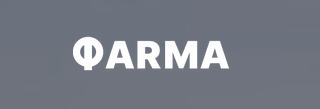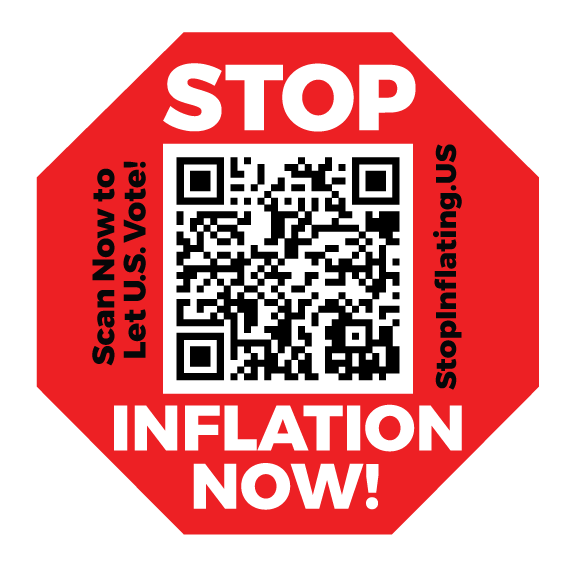 News Release
News Release
Luna Daily Partners Exclusively With Sephora For U.S. Launch, Becoming The First Exclusive UK Intimate Care Brand Available at Sephora
Luna Daily
New York, NY (March 28, 2023) - Revolutionary intimate care brand Luna Daily announced today that it will be partnering exclusively with beauty retailer Sephora for the brand’s U.S. launch. Luna Daily will become the first exclusive UK intimate care brand to launch at Sephora, as the retailer newly enters the category. Previously only available in the UK, this retail expansion marks the brand’s entry into the U.S. market. Luna Daily will be available in over 260 Sephora stores across the U.S. in May 2023, and on Sephora.com beginning on April 4, 2023. Luna Daily will also be featured on Sephora’s “Next Big Thing” wall, which features trending and high-potential brands. Luna Daily is a female-founded, microbiome balancing body care brand for all skin, even your most intimate. Founded by beauty-industry veteran Katy Cottam and formulated with dermatologists and gynecologists, the products are powered by Luna Daily ’s unique complex [THERMA-BIOME+™] made up of Thermal Water, Prebiotics & Vitamins to strengthen, nourish, and protect the skin’s microbiome. All Luna Daily products are pH perfect, natural and vegan, free from soap, allergens, sulfates and parabens, sustainable, and thoughtfully designed. Luna Daily has three core ranges, carefully curated to consider the changes women go through daily, weekly, and monthly - from getting your period, through motherhood, to menopause. These are comprised of Original (for daily care), Fragrance-Free (for sensitive or allergy-prone skin, including pregnancy and post-birth), and Hydrating (for dry, dehydrated or hormonally changing skin, including, perimenopause and menopause). Luna Daily will launch all three of its ranges for women of ‘all ages & stages’ exclusively at Sephora U.S. on their “Next Big Thing” wall with their best-selling hero The Everywhere Spray-To-Wipe, the World's first natural, eco alternative to single-use wipes (1 bottle = 300 wipes), The Everywhere Wash, a natural, gentle cleansing wash, and The Everything Oil, a lightweight, deeply moisturizing, multi-tasking oil clinically proven to visibly reduce ingrown hairs, dark spots, redness, and bumps for smooth, soft skin. Each product has been tested on all skin types, including sensitive skin, and was created based on the brand’s mission to revolutionize the outdated 'feminine hygiene' category by providing a simplified, thoughtfully created regimen that can be used by anyone, anywhere. The Everywhere Spray-To-Wipe will also be featured in Sephora’s “Minis and More” across 60+ stores. Multi-use, it’s perfect for instant cleansing, on-the-go, post-gym, or on your period. The Everywhere Spray-To-Wipe is the must-have companion in your handbag, gym bag, or at home. Spray directly onto skin or onto a tissue to create a refreshing, skin-friendly eco-wipe for all skin, even your most intimate. One recyclable bottle is the equivalent of 300 single-use wipes. In 2022 alone, sales of the product saved 2 million single-use wipes. “ Luna Daily was born out of personal experience of not being able to use traditional body care products for my intimate skin, frustrated at the outdated feminine hygiene products available with all of the ‘what’s wrong with her’ associations. With the help of medical experts including dermatologists and gynecologists, I created Luna Daily – microbiome balancing body care for all your skin, even your most intimate. And revolutionizing a new category of products is only part of our mission – with Luna Daily, I want to help normalize conversations and change education, connecting women to each other and their entire bodies,” said Katy Cottam, Founder of Luna Daily. “I am so thrilled to be partnering with Sephora as the leading global beauty retailer driving forward this movement. The retail environment is integral to helping us redefine the category and consumer shopping behavior and it’s a huge moment to be the first ever brand of our kind in a Sephora store alongside established beauty categories.” “Sephora is thrilled to partner with Luna Daily and continue bringing our clients best-in-class products that support all their beauty and wellness needs,” said Cindy Deily, VP Skincare Merchandising at Sephora. “With its inclusive approach and effective, clean formulations, Luna Daily offers products that support the unique needs of women at all stages of life and helps reinforce Sephora’s commitment to this important, growing category of intimate care. We look forward to introducing Luna Daily to our Sephora community and know it will be a wonderful addition to our assortment.” Luna Daily products are formulated with The Luna Daily Collective, composed of expert dermatologists, gynecologists and experts. The Luna Daily Collective is newly joined by Dr. Cheruba Prabakar, a U.S.-based board certified OBGYN who specializes in supporting women across a range of conditions, and is also a nationally certified menopause practitioner. “ Luna Daily’ s mission to provide education and dispel myths about intimate care is perfectly aligned with my own values. As an OBGYN, intimate care is one of the most common topics I address in my practice, and infections due to product use are the most frequent reason why patients come in to visit me. I am thrilled to be working with Luna Daily to continue helping people choose products that are safe, effective, and can be used from head to toe,” said Dr. Prabakar, OBGYN & medical advisor for The Luna Daily Collective. Venture capital has also taken notice of the rapid rise in consumer demand for these emerging wellness categories. In order to fuel the new market entry into the U.S. and expansion into brick and mortar retail, Luna Daily has closed a $3.7MM investment from UK firms Redrice, Joyance, and Velocity Juice, as well as angel investors. Luna Daily is over 70% female owned and has a 70% female senior leadership team. For more information on Luna Daily, visit luna-daily.com. ABOUT LUNA DAILY Say hello to Luna Daily - for all skin, even your most intimate. Founded by Katy Cottam (former Global Head of Brand Marketing at Charlotte Tilbury) and formulated with dermatologists and gynecologists, Luna Daily products are powered by the brand’s unique complex [THERMA-BIOME+™] to strengthen, nourish, and protect the skin’s microbiome. All Luna Daily products are pH perfect, natural and vegan, free from soap, allergens, sulfates and parabens, sustainable, and thoughtfully designed. They have three ranges to cater for all ages & stages. Through Luna Daily ’s pioneering research with 1,000 women of all ages, stages and ethnicities, it has been found that: 80% of women cannot accurately label the vulva; 1 in 3 women are still washing inside their vagina (despite it being self-cleaning); 43% of women's washing routines have caused a gynecological issue; and 65% of women admitted to thinking 'something was wrong' when seeing a feminine care product in a friend’s bathroom. Luna Daily aims to build education and awareness around these commonly misunderstood topics and normalize conversations around intimate care. Luna Daily is also proud to be partners with The Lady Garden Foundation, with the shared mission to destigmatize conversations around gynecological health, whilst raising funds to support the foundation’s ongoing work in reducing the devastating impact of gynecological cancers. ABOUT SEPHORA AMERICAS Since its debut in North America more than 20 years ago, Sephora has been a leader in prestige omni-retail with the mission of creating an inviting beauty shopping experience and inspiring fearlessness in our community. With the goal of delivering unbiased shopping support and a personalized experience, Sephora invites clients to discover thousands of products from more than 360 carefully curated brands, explore online and through our mobile app, enjoy services at the Beauty Studio and engage with expertly trained Beauty Advisors in more than 600 stores across the Americas. And with its new long-term retail strategic partnership, clients can now shop Sephora at Kohl’s, a fully immersive, premium beauty destination, with 600 locations nationwide by year-end, and 850 locations by 2023. Clients can access the free-to-join Beauty Insider program and digital community, which together enhance the experience of Sephora’s passionate clients. Sephora has been an industry-leading champion of diversity, inclusivity, and empowerment, guided by our longstanding company values. In 2019, Sephora announced a new tagline and manifesto, “We Belong to Something Beautiful,” to reinforce its dedication to fostering belonging amongst all clients and employees and to publicly strive for a more inclusive vision for retail in the Americas. Sephora continues to give back to our communities and advance inclusion in our industry through its social impact and equity programming, called the Sephora D&I Heart Journey. For more information, visit: https://www.sephora.com/about-us and @Sephora on social media. For media inquiries, please visit our Sephora newsroom or email ExternalComms@sephora.com. # # # LUNA DAILY PR CONTACT: OGAKI Digital Hallie Sawyer hsawyer@ogakidigital.com Contact Details OGAKI Hallie Sawyer hsawyer@ogakidigital.com Company Website https://luna-daily.com
March 28, 2023 06:00 AM Eastern Daylight Time
 News Release
News Release






